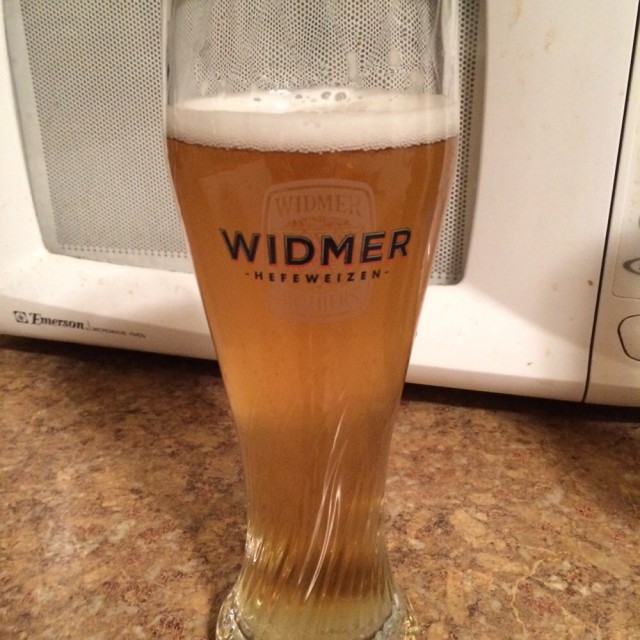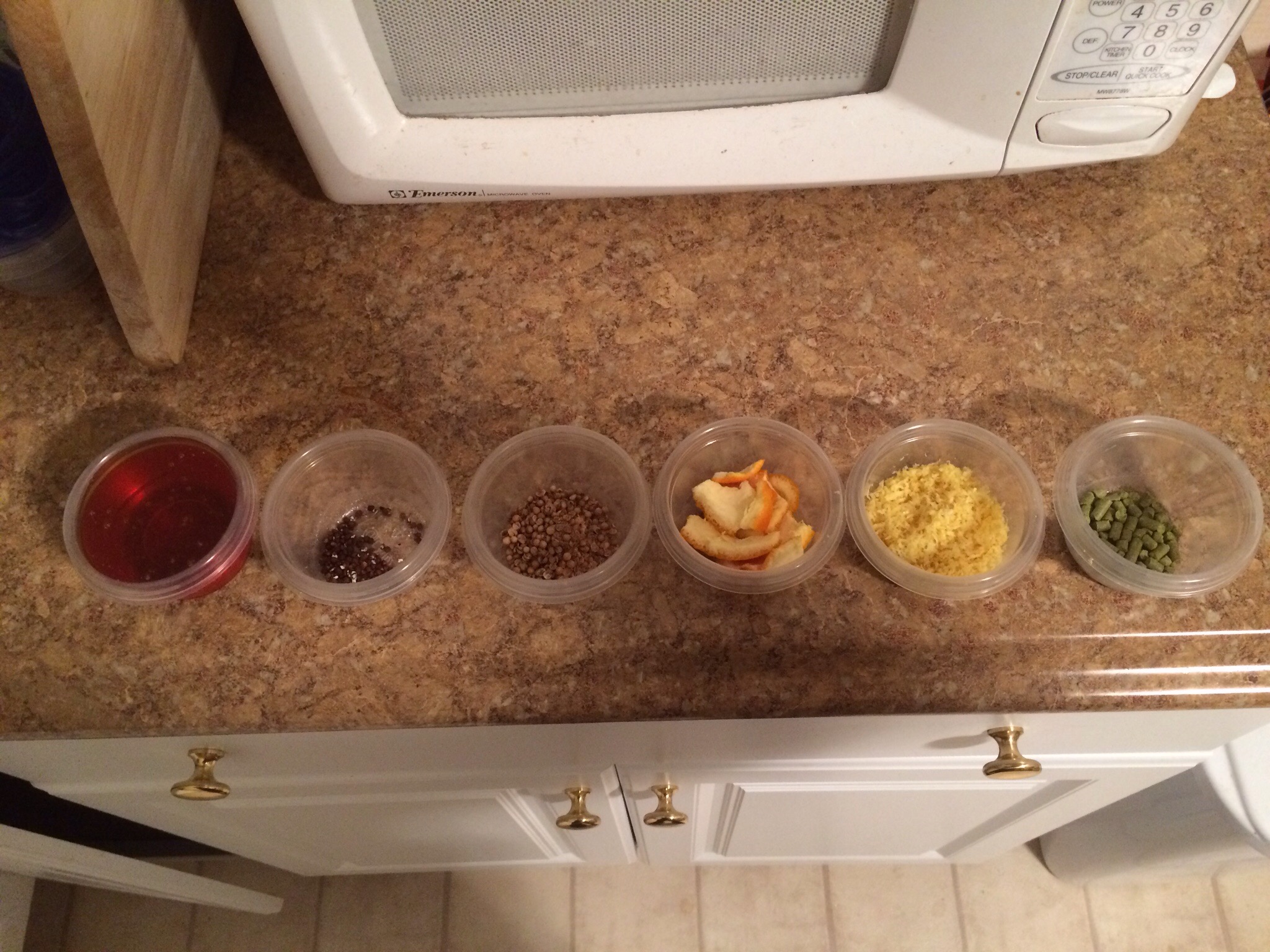My plan for this years National Homebrew Competition (NHC) was to rebrew beers that had done well in previous competitions, or that I really enjoyed and thought would do well.
Employee Orientation 101
I have written a brew day post on this batch. I sent it to be published on another blog and have been waiting for that to go up before publishing here.
 |
| The grain bill pushed my mash tun to the limit. |
 |
| I boiled ten gallons of wort down to less than five. |
With
this brew advancing to the final round in 2019, I was always going to rebrew it for 2020. I took the feedback I received from the judges and changed my recipe and process for this batch. The idea was for the malt flavor to be even richer. I increased the amount of Munich Malt to punch up the sweetness and breadiness in the flavor and the aroma.
During my brew day to improve my efficiency and increase the Maillard reaction in the wort, I extended my boil. When on a tour of the barrel room at Goose Island the tour guide said that Bourbon County has a three hour boil. I thought it would be interesting to try the technique at home with my imperial stout.
The brew day went fairly well. With my extended boil I ended up with around 4.75 gallons of wort and had an SG of 1.116. I pitched a huge amount of yeast from
Derby Wharf Porter and fermentation took off right away. This was going to be great!
Then a few days after the brew day I went on a work trip. I would come to learn the difference between a 1.116 wort like this batch, and a 1.096 wort from the original batch was more significant than I realized. While the 2019 batch was almost fully fermented out and tasted pretty good after only seven days, the 2020 batch had stalled out and was noticeably boozy.
The higher gravity wort had stressed my yeast and resulted in a poor fermentation. The yeast needed added yeast nutrient and oxygen to finish fermenting. I should have added the yeast nutrient and hit the wort with my aquarium pump a couple days post-pitch, and then probably again a couple of days later.
I racked the beer to a secondary hoping the alcohol would mellow and perhaps the wort would pick up some oxygen and frement a bit more. After more time aging, I still wasn't happy with the beer and decided not to enter it at all into NHC.
I do want to brew this again. When I do, I will make sure I am home to add the yeast nutrient and oxygen this wort needs.
Uncommon Harvest
This was a rebrew of a 2018 recipe I made with my first harvest of homegrown hops. That year I planted Willamette, Northern Brewer, Chinook, Cascade, and Centennial rhizomes. Northern Brewer was the one plant that produced more than a few cones that first year. Anchor Steam is known for using Northern Brewer hops, so California Common was a clear choice for style to use those hops in. The beer I made didn't have much in the way of hop flavor, but the malt flavor was outstanding. Even though the lack of hop character made it miss the mark for style, I still thoroughly enjoyed that beer.
When I rebrewed the batch I wanted to use a domestic base malt in this quintessentially American style. I used Mapleton Pale Malt from my friends at
Maine Malt House as my base. The specialty malts were all Muntons. To be sure the hop flavor and aroma was to style I used Northern Brewer pellet hops I purchased instead of my homegrown hops. The samples I tasted were if anything too bitter, but the beer could mellow with time.
Before I kegged the beer, I wanted to use my
new toy to cold crash the beer. At the same time, I needed a temp controller for another batch. I thought I could just put the beer in one of the fridges, and use the dial thermostat that is built into the fridge. I turned it all the way down that should have gotten my wort to near freezing. I mean this is a mini-refrigerator not a mini-freezer after all. When I went to keg the beer it looked like this:
 |
| Yup! Frozen solid |
That's two batches that would not have made it to NHC. I froze my California Common a couple weeks before the entry deadline. That gave me just enough time to brew another beer. I brewed a different style that I thought I could turn over quickly. That batch was a new brew and I'll talk about that batch in a separate post.
Fredward Wit
Last year I casually mentioned
Fredward Wit took an honorable mention in the New England Regional Homebrew Competition. Fredward Wit, named after our cat, was a beer Jennie and I developed together and brought to the North Shore Brewer's 25th anniversary party.
The grist and hops are loosely similar to my previous
Walk-Off White. When I was scooping the base malt brewing the first batch, I noticed that instead of the
Pilsner Malt I had intended to use, I was scooping
Muntons Super Pale malt. I thought to myself that Super Pale should work just fine.
Super Pale is a very interesting malt that a lot of brewers aren't familiar with. Lighter in color than even our Pilsner Malt, Super Pale was developed specifically for hoppy beers. With it's light color, the malt flavor is as restrained as possible which allows other flavors in the beer to come through more such as hops in IPAs. Super Pale is also a great choice in yeast-driven beers like saison. In Fredward Wit it really allowed the citrus and spices to come through. Super Pale is going to be my base malt of choice in all of my fruit beers going forward.
Where I did depart from Walk-Off White was the spice blend. For the most part Fredward has a sweet disposition, except when he demands treats, windows to be opened or immediate attention and pets. As such I wanted a sweeter spice blend. I replaced the lemon and grains of paradise with chamomile and vanilla. Jennie and I decided to use bitter orange and decided to use a bit more to balance the vanilla.
The judges feedback from the first batch was they thought the beer was a touch too hoppy. In the re-brew I eliminated the small flavor hop edition from the first batch and kept everything else the same. I think I may have liked the last batch better, but this second batch might be more to style. I can't find any glaring flaws in the second batch. I think it would have done well at NHC. I may have to brew it again for NHC 2021.
Spring Training Stout
Last year I wanted to bring back both of my house Irish beers,
Rundown Irish Red and
Spring Training Stout. I only had time and space to brew an extract version of Rundown Irish Red. I couldn't have been happier with how that batch came out. It had the complexity and drinkability I have always wanted my Irish Red to have. If I had entered it in competition I also think it would have done well.
While I could have easily rebrewed Rundown for NHC, by 2020 it had been five years since I brewed Spring Training and I missed it! While I thoroughly enjoyed
Derby Wharf Porter, after finishing the keg I found myself craving a dryer and roastier stout.
As I revisited a five year-old recipe, I researched Irish beers and thought about how I would approach brewing Spring Training. Many Irish Stouts are brewed with British Pale Malts like Maris Otter or Planet Pale. Those are both great malts, but they are designed for all-malt brewing or brewing with a small percentage of un-malted adjuncts. Irish stouts can use quite high percentages of un-malted flaked barley to give the beer a full body. I read how one Irish craft brewery that uses a step mash to activate the enzymes they need to achieve full conversion of the flakes in the mash. Several Irish malters make a "Stout Malt" which isn't quite as flavorful as a pale malt, but does have a higher diastatic power than a British pale malt to convert more un-malted flaked barley typically used in Irish stouts.
Revisiting my last batch of Spring Training, the batch was a partial-mash with a base 5lbs of Stout Malt, 2lbs Flaked Barley, and 3.3lbs of Maris Otter Extract. My current batch was all-grain with Planet Pale as my base malt. I didn't want to try a complicated step mash. Being moderately concerned about the Planet Pale converting a large amount Flaked Barley, I replaced 1lb of the Flaked Barley with Wheat Malt. The Wheat Malt will add body, while also bringing it's own enzymes to the party because it is malted.
This change worked perfectly. The finished beer is rich, but drinkable. It is roasty with coffee notes, but not harsh or overly dry like some American-made stouts. That tells me that my water chemistry was on point.
One other change I was forced into was with my yeast. I pitched two jars of my House Irish Blend that I harvested from a prior batch. I didn't make a yeast starter, and the slurry never really took off. I sprinkled a sachet of S-04 which did a perfectly fine job fermenting the beer. In my mind the beer would have been better with my House Irish Blend, even if the beer is enjoyable as it is.
 |
Enjoying my Spring Training stout on St. Patrick's Day while
watching the Dropkick Murphy's. |
Similar to Rundown, I think this recipe for Spring Training is perfect. For this batch I benchmarked one of my favorite beers, Guinness Extra Stout. The color is jet black with an off-white head. It has a nice roasty aroma. I am absolutely brewing this for next year's NHC and making a yeast starter for my House Irish yeast.











